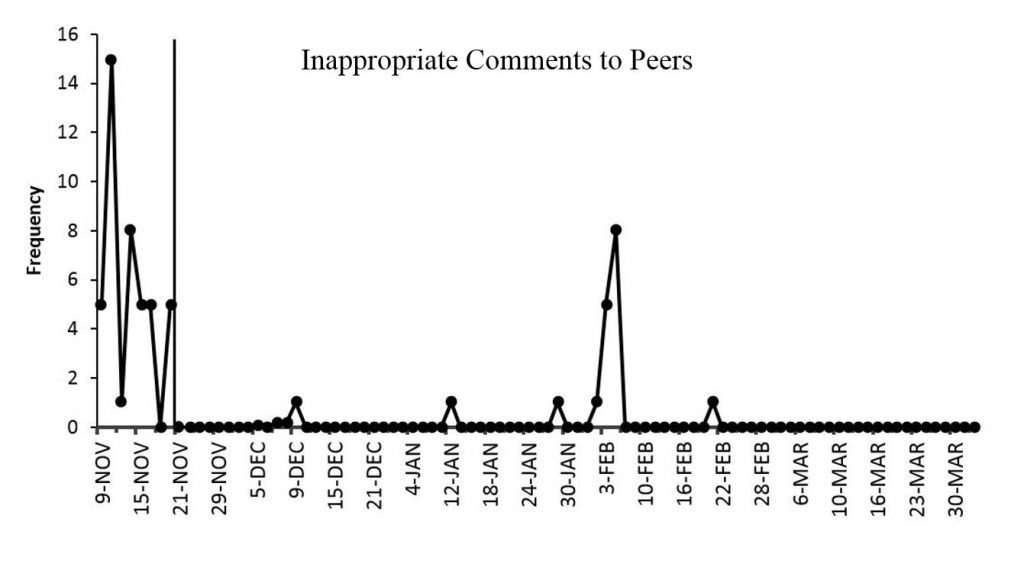
The behavior of interest involved repeating statements or engaging in behaviors that were known to bother a client’s peers. These included reminding them that they lost a game, making a joke about someone, or saying something inappropriate about a peer. The intervention involved a reinforcement procedure in which the client received reinforcement for not engaging in these behaviors, while also setting goals for prosocial comments to say per day. For each instance of an inappropriate behavior, the client was made to apologize and pay peers from their own reward tokens. The graph displays the effects of the intervention over time and subsequent reductions in the problematic behavior.
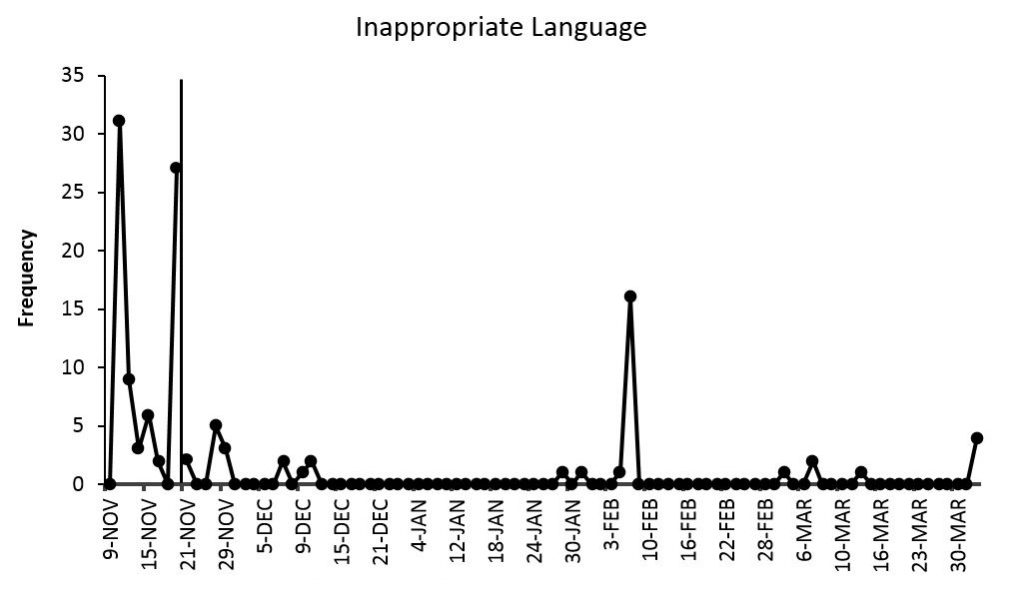
The behavior of interest included a variety of statements not appropriate for school. The intervention consisted of a penalty in which token money earned as reinforcement for the STEPS reward Store was removed for each instance and the client lost free time in the home after treatment. The graph displays the effects of the intervention over time and subsequent reductions in the problematic behavior.
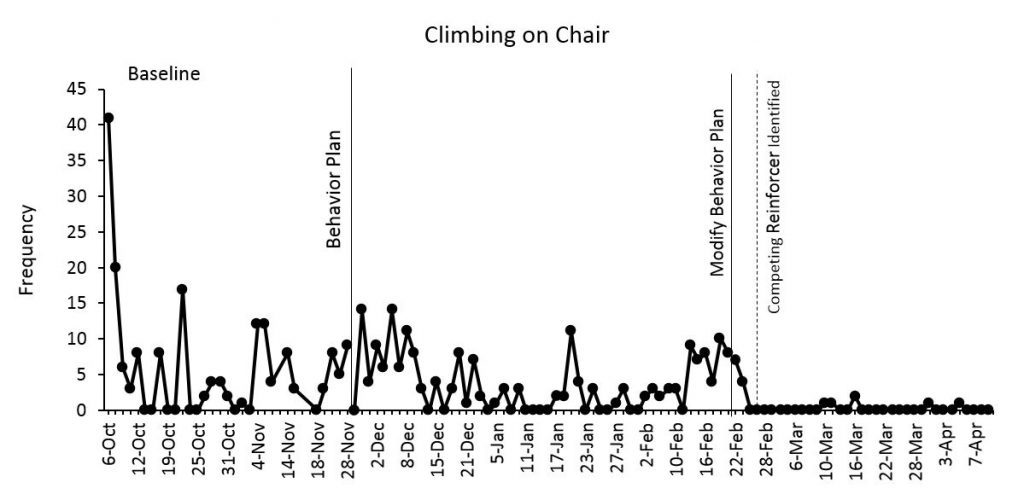
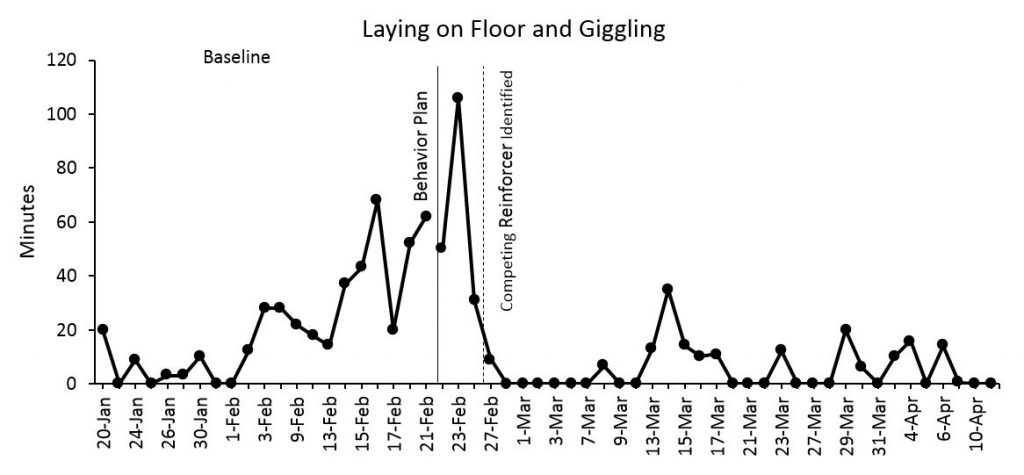
The behaviors of interest included any instance where the client was on the floor and giggling and climbing on chairs. A behavior plan was implemented in which the behavior was ignored (i.e., placed on extinction) and a competing item was identified that the client could earn for appropriate behavior. The graph demonstrates the effects of the intervention over 2+ months of intervention.
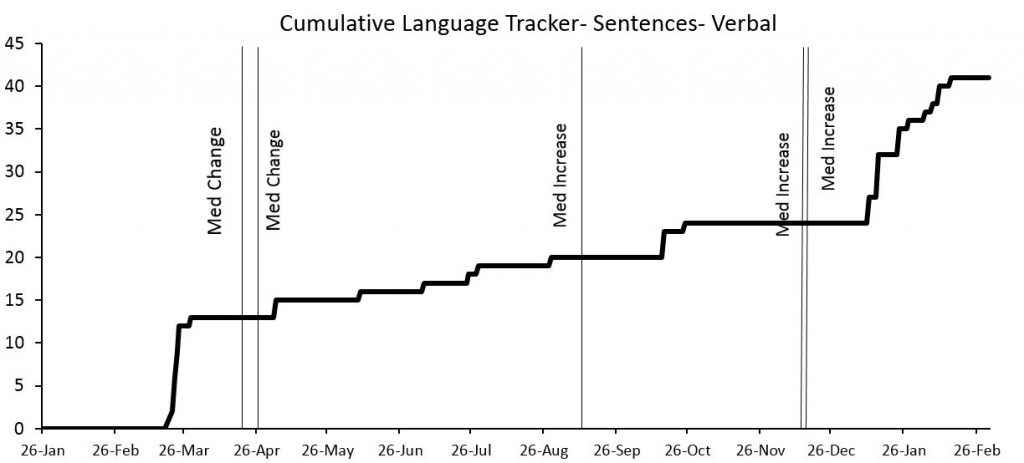
This graph is a log of spoken sentences by a client in the program. Medication changes communicated by parents are depicted on the graph to assist with assessing the impact of psychotropic interventions on learning. Over time, the graph indicates the acquisition of a number of phrases and sentences through the use of behavioral interventions during work time and through teaching embedded throughout the day in the natural environment.
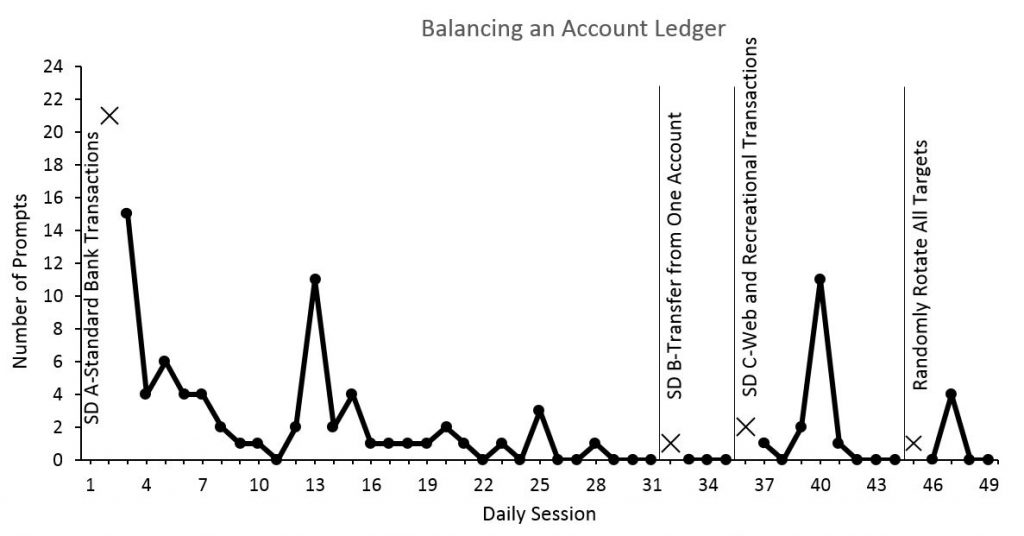
This program consisted of a several different instructional steps to teach how to log banking transactions in a ledger. For instance, SD A consisted of teaching the client to log standard transactions. SD B taught how to indicate transfers from savings to checking accounts. SD C used examples of how to log various web transactions and other recreational activities such as eating out and ordering from online vendors. Lastly, all previous targets were randomly rotated to ensure mastery of all skills taught to the client. The number of prompts to teach each skill is graphed, which 3 days at 0 prompts being the requirement to move to the next step.
